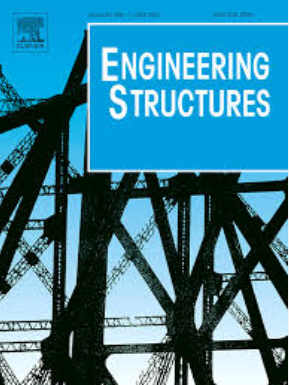Concurrent optimization of truss structures and build directions for multi-axis additive manufacturing
IF 5.6
1区 工程技术
Q1 ENGINEERING, CIVIL
引用次数: 0
Abstract
Additive manufacturing (AM) has undergone rapid development over the past decade, yet printing parts with overhangs still poses a critical challenge, restricting the fabrication of components with arbitrary geometries. In structural optimization, incorporating overhang constraints can mitigate this issue. However, prior research has predominantly focused on 3-axis machines, leaving multi-axis capabilities insufficiently explored. These conventional 3-axis approaches often necessitate considerable trade-offs in structural material consumption. To overcome this, our study introduces a novel two-step optimization method tailored for multi-axis AM, which uses an optimized structure from traditional layout optimization as the starting point. The first step involves decomposing the design domain into multiple zones and solving a novel optimization problem to identify optimal local build directions for each zone, aiming to maximize the structure's printability. If the printability is still not satisfactory, we proceed to a second step, which refines the structure and build directions to minimize overhanging elements. Our examples validate the effectiveness of the proposed method, showing that the substantial performance sacrifices typically associated with 3-axis approaches are reduced to less than 7 % with our multi-axis AM-based approach.
求助全文
约1分钟内获得全文
求助全文
来源期刊

Engineering Structures
工程技术-工程:土木
CiteScore
10.20
自引率
14.50%
发文量
1385
审稿时长
67 days
期刊介绍:
Engineering Structures provides a forum for a broad blend of scientific and technical papers to reflect the evolving needs of the structural engineering and structural mechanics communities. Particularly welcome are contributions dealing with applications of structural engineering and mechanics principles in all areas of technology. The journal aspires to a broad and integrated coverage of the effects of dynamic loadings and of the modelling techniques whereby the structural response to these loadings may be computed.
The scope of Engineering Structures encompasses, but is not restricted to, the following areas: infrastructure engineering; earthquake engineering; structure-fluid-soil interaction; wind engineering; fire engineering; blast engineering; structural reliability/stability; life assessment/integrity; structural health monitoring; multi-hazard engineering; structural dynamics; optimization; expert systems; experimental modelling; performance-based design; multiscale analysis; value engineering.
Topics of interest include: tall buildings; innovative structures; environmentally responsive structures; bridges; stadiums; commercial and public buildings; transmission towers; television and telecommunication masts; foldable structures; cooling towers; plates and shells; suspension structures; protective structures; smart structures; nuclear reactors; dams; pressure vessels; pipelines; tunnels.
Engineering Structures also publishes review articles, short communications and discussions, book reviews, and a diary on international events related to any aspect of structural engineering.
 求助内容:
求助内容: 应助结果提醒方式:
应助结果提醒方式:


